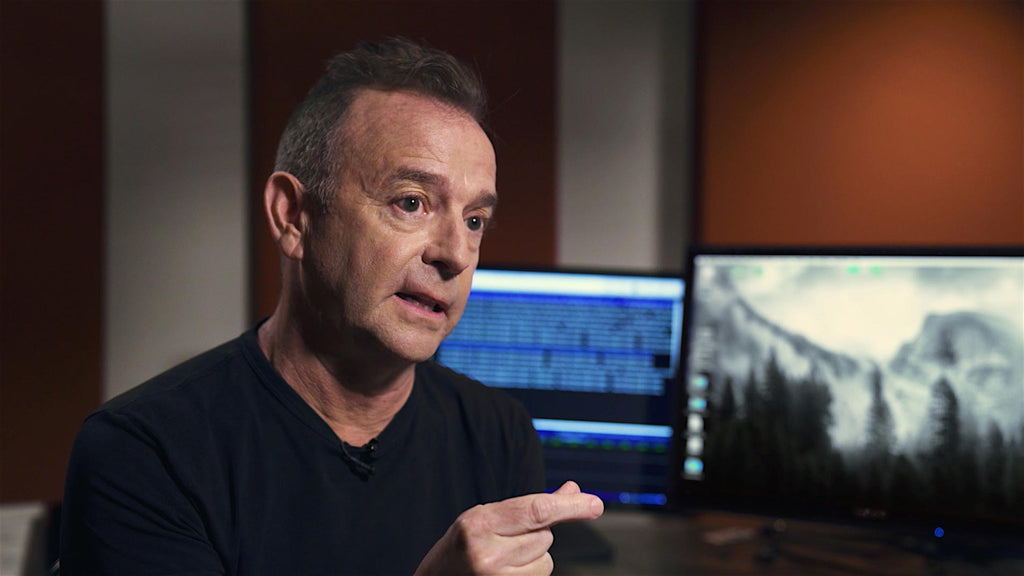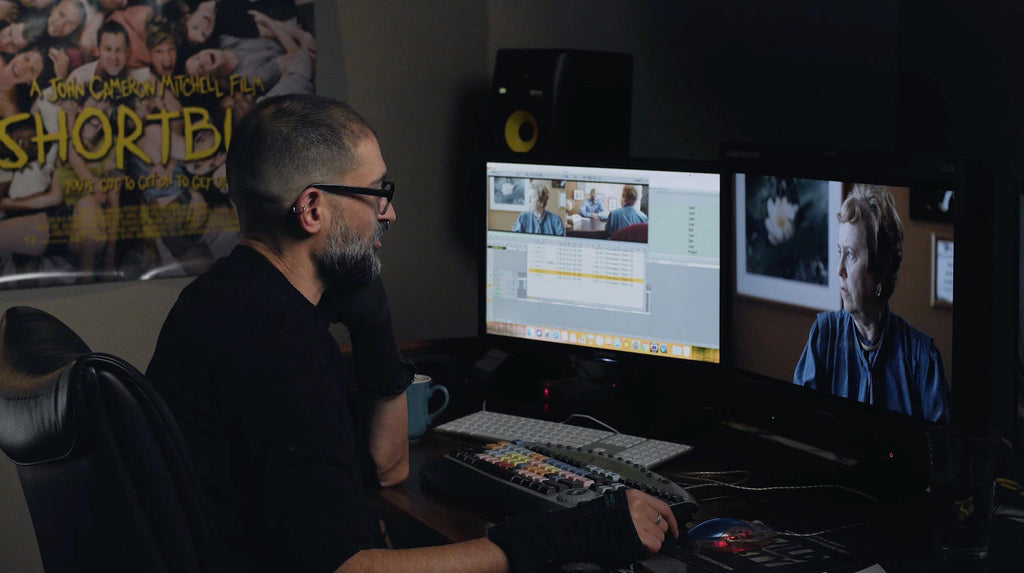How to Balance Your Technical and Creative Knowledge
Guest post by Gordon Burkell: Gordon is the co-founder of FilmmakerU, where the best in film teach their craft.
As someone who's taught numerous film college courses and mentored many students onto the film career they've wanted, I've watched a lot of young people enter the post-production industry with a lopsided skillset. Typically students fall into one of two categories: the confident creative or the fearless techie. Rarely have I seen someone who has a balance of both. People tend to pursue knowledge in the area they excel in and avoid what they fear, but students need to accept that both of these skills are requirements for a successful career in post-production. We've laid out some strategies for you to find a better balance.
Both Skill Sets Matter to Employers
Having a skill set that includes both creative and technical knowledge is valuable to employers because most people who hire employees are looking for candidates who can cover a wide range of the company's post-production needs. For example, many film editors look for assistants who know how to use After Effects, which is a technical skill typically outside of an assist editor's skill set. Knowing After Effects makes the assistant editor more valuable because the production saves money on VFX. However, those same editors want an assistant who can help them with creative tasks too, like sound designing a scene, providing creative input on a cut, or editing a "previously on" segment. If you can make yourself an asset to a company by having multiple skillsets, then you'll be their first choice to hire.>
Evaluate Your Skills
The first step is to become introspective. Do you shy away from discussions about technology? Or are you nervous when talking about movies with a director? Whatever the area is that you're afraid of is where you need to dive in first. Try our quiz to find your strengths and weaknesses:
In an interview at Sight, Sound, and Story Toy Story 3 editor Ken Schretzmann discussed how, when he has a cut of a film at Pixar ready, the central creative team working on the project will hold a feedback screening together. Pixar refers to these screenings asThe Sweatbox. That is because everyone in the room is sweating bullets during the cut's review. The point is, when it comes to improving creatively, we need others to help us understand our strengths and weaknesses. Soliciting feedback from respected peers, who are in the job-rolls that we are looking to fill ourselves, is a great place to get started.

Create Good Habits
Now that you've identified your strengths and weaknesses, it's time to create some good habits. In his interview with Zack Arnold on the Optimize Yourself podcast, productivity expert Zack Sexton discusses the importance of developing rituals when trying to do something new. Sexton recommends keeping your routines small; they're easier to achieve and can compound to more important things, such as knowledge of an NLE. He also encourages doing things daily and utilizing a "trigger & reward" system to keep you on track. According to Sexton, habits form in three steps.
- Trigger: Utilizing a reminder for the routine.
- Execution: Doing the routine.
- Reward: This could involve checking an item off your todo list (how good does that feel?!), or seeing a completed bar at the bottom of the LinkedIn Learning screen.
The rewards reinforce the habits, and eventually, you'll get to the point where the pattern is ingrained in your mind, and not doing your daily task makes you feel off.
Embracing Technology
I get it, technology can be scary, but there is nothing to fear if you practice outside of work. Technology is only frightening when you're stuck without that knowledge while you're at work, and the stakes are high. The goal is to find low-risk ways to practice.
Editors are always worried about being required to use NLEs that they are unfamiliar with on new projects. Knowledge of multiple NLE's is an asset to any editing career, but many editors are too afraid to step outside of their primary tool. This fear can cost them work.
The best way to learn a new NLE is to work on a low-risk project first. Make that video for your mom's birthday, or edit your buddy's short film using the NLE that you want to learn. Inevitably, you'll resist learning -- reading articles and watching videos is time-consuming. Editing in new software is frustrating -- but this is natural. The best thing you can do is take it one day at a time and know that all people are beginners at some point. Put down the guilt and just be proud of yourself for trying. Even if you can only handle half an hour of practice a day before banging your head against the wall, remember that all training is helpful.
Make taking technical risks a part of your everyday job. Fear of making a mistake holds us all back from achieving our potential, and that's why sometimes the best way to learn is to dive right in. I was meeting up for lunch with Luke Sargent, an editor who I've worked with several times, and when I entered his edit suite, I noticed he was using a Wacom tablet. I'd been interested in using one for a long time, but I was always afraid of the learning curve. I didn't want it to slow down my workflow, and honestly, I thought it'd be much harder than it ended up being. When I mentioned to Luke that I was interested in using a Wacom tablet but was worried about it slowing me down, his response was simple: Dive right in. Remove your mouse from your edit bay altogether. After a few days, you'll be at the same speed as you are with a mouse. After a few more days you'll faster. To this day, I keep a Wacom tablet in my room and use it for everything.
Think of technology as your creative ally. In ACE editorBrian Kates's (The Marvelous Ms. Mazel, Short Bus) course on FilmmakerU, he teaches viewers how to use the morph cut effect in Media Composer to hide what would otherwise look like a jump cut. His understanding of the different settings of this effect improves his creative process. The morph effect gives him more power to tell the story he's trying to convey.
Embracing Your Film Creative Side
If technology is not the weakest part of your skillset, then you've already conquered something which most people struggle with, so what's preventing you from taking the same approach to pushing your storytelling side in the edit suite?
There is such a thing as practicing editing creativity. In my classes, I assign students editing projects where I require multiple cuts. For example, when they edit a commercial, I ask them to turn in a 60-sec, 45-sec, and 30-sec cut using the same footage. Another example is an assignment where I have my students re-edit a scene several times, requiring one cut where the focus is on character A, and then another cut where the focus is on character B. This allows the students to flex their creative muscles. Try this exercise for yourself with a project that you've already completed. It will force you to look at the footage and story differently.
Finally, and most importantly, make sure you're using a trusted group of peers and ask for their constructive feedback. It can be painful to hear that feedback at first, but remember, it's helping you improve. One thing I do with my students is to set feedback boundaries. Only constructive feedback is allowed, and students must always at first state what they enjoyed about the film. However, some students are nervous about giving and receiving feedback. In those situations, I set up a Google form; the students watch the videos and submit their feedback anonymously. I cull them and remove any comments that aren't constructive before showing them to the editor of the project. This anonymity is more comfortable for all of the students involved because the critique is more impersonal. If we find that a lot of people are mentioning the same issue, then the filmmaker student knows they need to re-examine that part of their film. If only one person suggests something, then the student filmmaker can take or leave that comment. Don't take things personally. You want to challenge your perceptions and make the best film possible.

Keep Practicing
It is vital not to stop practicing at any point in your career. Keeping your skills shape is required not only when you're new to a profession, but also when you've been working for years.
I was lucky enough to begin my career as an assistant at a sound studio back in the early '00s. Dolby had just released some changes to their system, Dolby Surround 7.1. I had been helping the mixer, Emmy winner Ric Jurgens, work on a project called Braceface, produced by and starring Alicia Silverstone. He was due for a week off when the project ended, but when Ric noticed that the mixing theatre was going to be available for a week, he found himself with the rare opportunity to have the mixing room to himself. Instead of taking that well-earned hiatus, Ric decided to spend that week teaching himself about the changes to Dolby Surround. Ric experimented by taking the projects he had previously finished and began to explore some new ideas that he had wanted to try out. Those ideas would be risky to do during the original production, but here Ric could experiment with no risk. He didn't do it for any praise. Ric did it for himself. He is an established sound mixer, with awards and credits to match, who made sure he was still learning and pushing not only his technical understanding but also the creative side of himself, too. No matter how far along in your career you are, make sure you're always pushing yourself and practicing.
Never Stop Pushing Yourself
To recap, start by assessing your skills. Identify your weaknesses and implement practice strategies to bolster that knowledge. A balanced post-production professional editor can chat about the latest show on Netflix with the production team and also walk into a post house with confidence knowing that if they don't understand something technical, they can learn it without being afraid.
Improving your technical skills will make you a better storyteller. Take a low-risk project and edit it in the new NLE that you want to learn.
If you're trying to improve your creative skills, make sure to analyze your projects critically and recut them in a few ways so that you can try different things out. Most importantly, get a trusted group of peers to give feedback; this is key!
Never stop pushing yourself to that next level. Dive in and learn the things that frighten you. Failure is part of learning. If you feel uncomfortable, then you're doing it right. Create good habits and accept that you need to push yourself a little each day. In the end, you'll only improve the skill that you push yourself to learn. It won't be easy, but you can do it!










1 comment
Thank you for the very insightful and inspiriting article, Gordon. I think i’ll have to come back and reread this whenever i’m feeling negative!